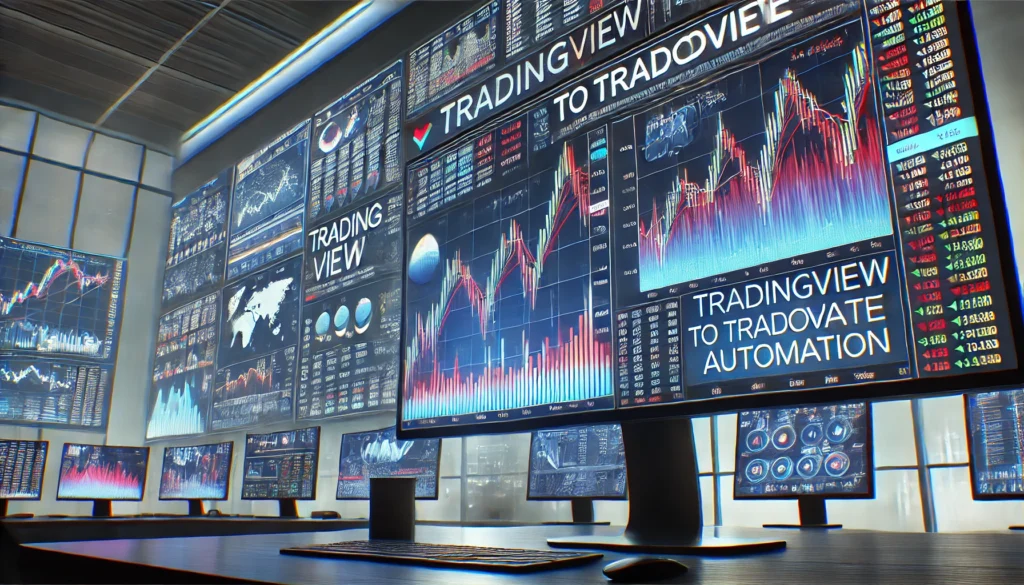Understanding various chart types is essential for traders aiming to make informed decisions in the financial markets. One such chart type that has gained popularity is the step line chart. This article delves into the specifics of the step line chart, exploring its construction, functionalities, and advantages for traders.
PickMyTrade is a powerful platform that offers a seamless solution for automating your trading strategies. Designed with versatility in mind, it supports a wide range of trading activities, making it ideal for both individual traders and those managing multiple accounts. One of its key strengths is the ability to effortlessly link and manage multiple accounts, allowing users to execute strategies across various portfolios with ease. Whether you’re trading for yourself or on behalf of clients, PickMyTrade’s intuitive interface and reliable automation ensure that your trading activities are both efficient and effective. With its cost-effective pricing and robust features, PickMyTrade is the ultimate tool for traders looking to enhance their performance in the markets.
What is a Step Line Chart?
The step line chart is a unique visualization tool that represents price movements as a series of steps, resembling a staircase. This distinct appearance is achieved by connecting price points in a stepped manner rather than a smooth line, allowing traders to observe segmented changes in price over time.
When using a step line chart, traders can easily identify trends and price movements. The chart’s design caters to those who prefer a clear and structured representation of market data, making it particularly beneficial for tracking price changes across various time frames.
How to Construct a Step Line Chart
Constructing a step line chart on TradingView is straightforward. When you select the step line option, the chart will display the price movements in a stepped format. This format allows traders to visualize price changes distinctly, as each segment represents a specific price point.
The step line chart is constructed based on the selected time interval, whether it be minutes, hours, days, weeks, or months. For instance, if you are viewing a daily chart, the step line will reflect the daily closing prices of the asset being analysed. This construction method helps traders quickly grasp the market trend.
Price Source Selection
One of the key features of the step line chart is the ability to select the price source used for construction. By default, the chart typically uses the closing price, which is the last traded price at the close of the selected time interval. However, traders can change the price source to other metrics, such as:
- Open price
- High price
- Low price
- Averaged price (e.g., High + Low / 2)
This flexibility allows traders to tailor the chart to their specific analysis needs, providing a more comprehensive view of price actions.
Interpreting the Step Line Chart
Interpreting a step line chart is relatively intuitive. The chart’s visual representation allows traders to quickly assess market trends. For example, an upward trend appears as a series of ascending steps, while a downward trend showcases descending steps. This staircase-like structure aids in visualizing the overall market direction.
As traders hover their mouse over specific price points on the chart, they can easily track the corresponding dates and prices. The step line chart enables a clear view of price movements day-to-day, enhancing the trader’s understanding of market dynamics.
Customizing the Step Line Chart
Customization is another significant advantage of the step line chart. Traders can alter the color, thickness, and overall appearance of the step lines to suit their preferences. By adjusting these features, traders can enhance the chart’s visibility and make it more aligned with their trading style.
For instance, a trader may prefer a thicker line in a bright colour to ensure visibility on different devices or screens. This adaptability makes the step line chart not only functional but also aesthetically pleasing, encouraging traders to engage with the data more effectively.
Benefits of Using a Step Line Chart
There are several benefits to using the step line chart, particularly for those who appreciate clear visual representations of data. Some of these advantages include:
- Clarity in Price Changes: The stepped format highlights significant price changes, making it easier for traders to identify trends and reversals.
- Intuitive Understanding: The staircase-like appearance resembles an escalator, providing a straightforward way to comprehend market direction.
- Customizable Features: Traders can tailor the chart to their needs, enhancing both functionality and visual appeal.
- Effective for Multiple Time Frames: The step line chart can be applied across various time frames, allowing for a versatile analysis tool.
Conclusion
The step line chart is a valuable tool for traders seeking a clear and structured approach to market analysis. Its unique construction method, customizable features, and intuitive representation of price movements make it an excellent choice for those looking to enhance their trading strategies.
By understanding how to effectively use the step line chart and its various functionalities, traders can gain deeper insights into market trends and make more informed decisions. Whether you are a seasoned trader or just starting, the step line chart can elevate your trading experience.
Explore the step line chart on TradingView and discover how it can benefit your trading journey.
PickMyTrade is an innovative platform that takes the hassle out of trading by offering powerful automation tools tailored for modern traders. With its ability to seamlessly integrate with TradingView and Tradovate, PickMyTrade empowers users to execute strategies across multiple accounts with ease. Whether you’re trading for yourself or managing accounts for clients, PickMyTrade’s user-friendly interface simplifies the entire process, from generating alerts to managing trades. The platform’s flexibility and affordability—offering unlimited strategies for just $50 per month—make it an indispensable tool for traders looking to optimize their performance without compromising on cost or efficiency.




